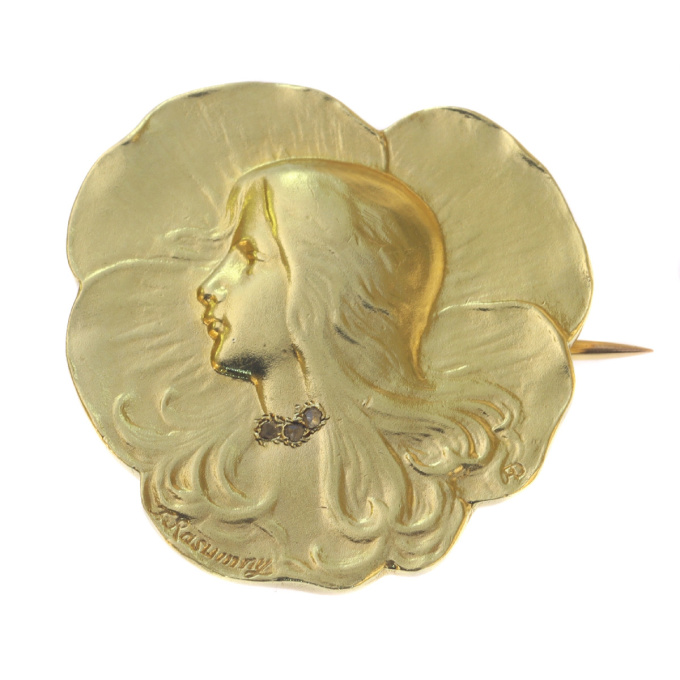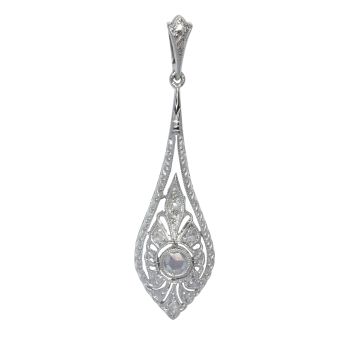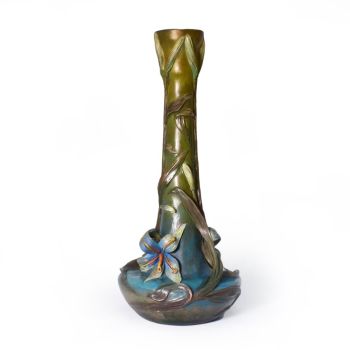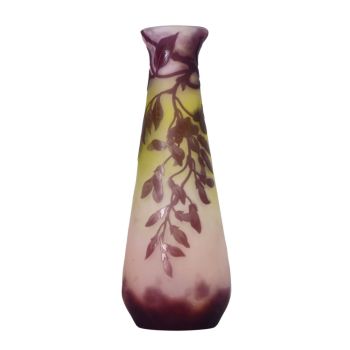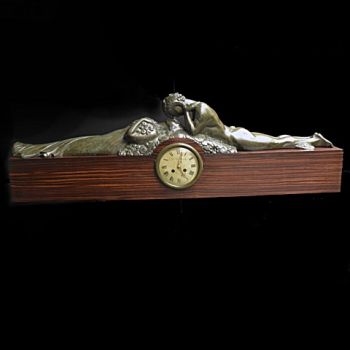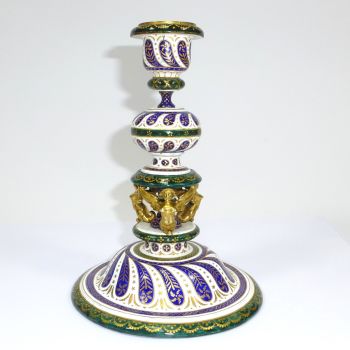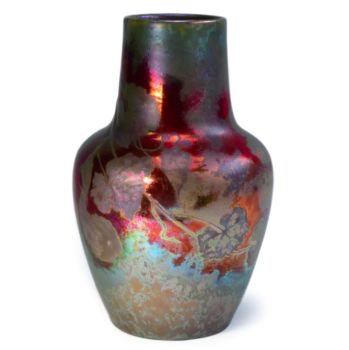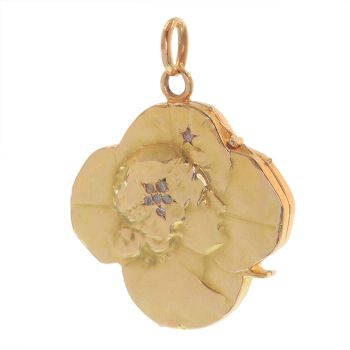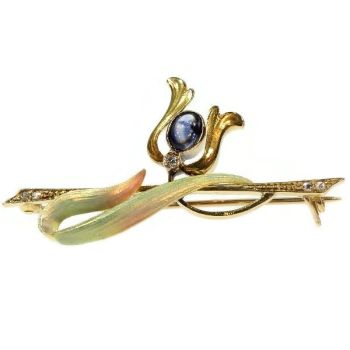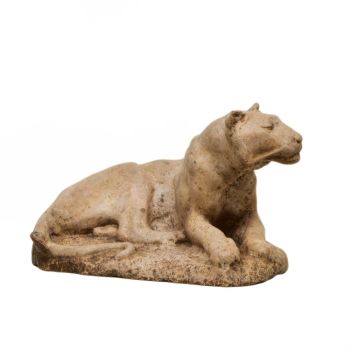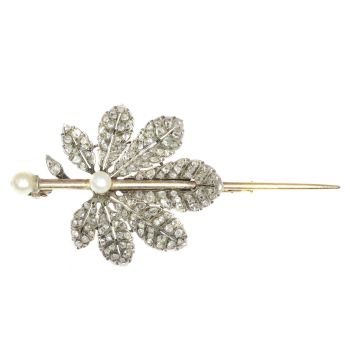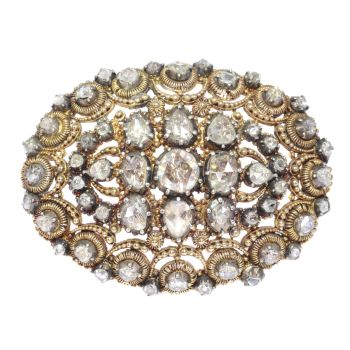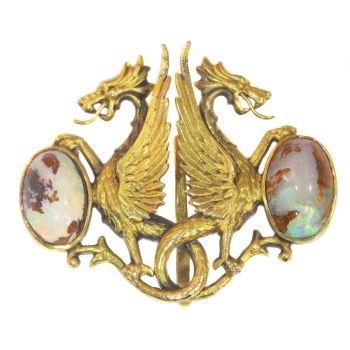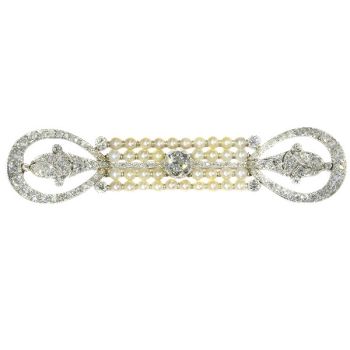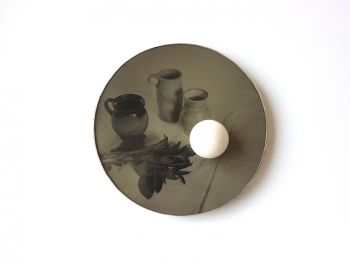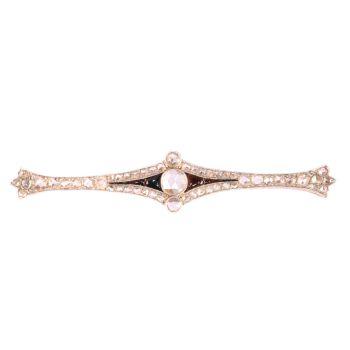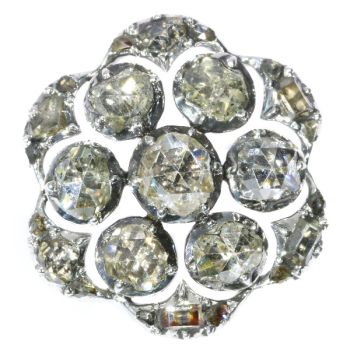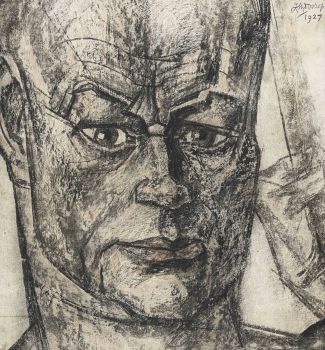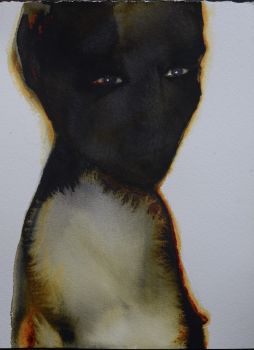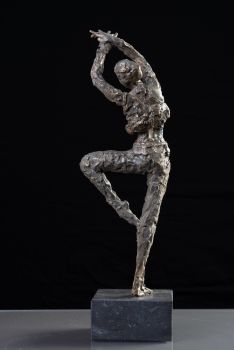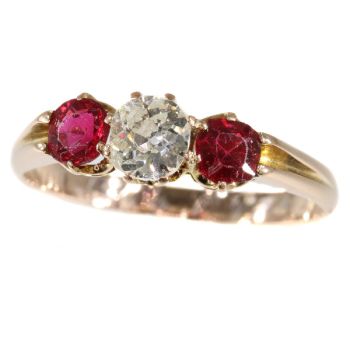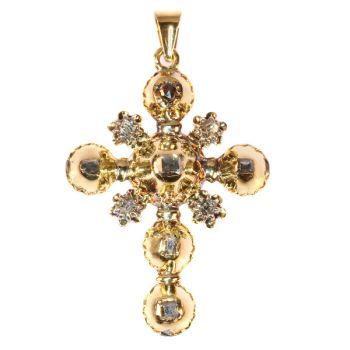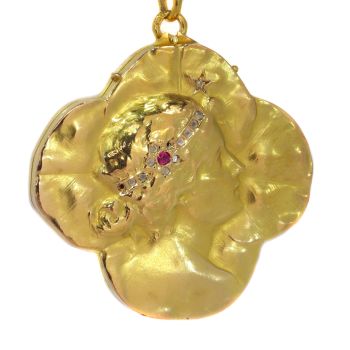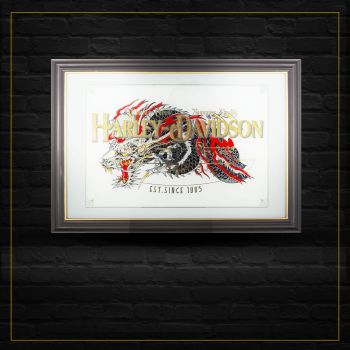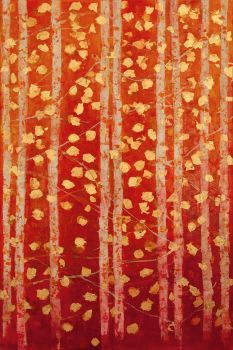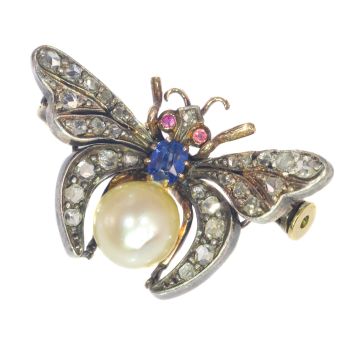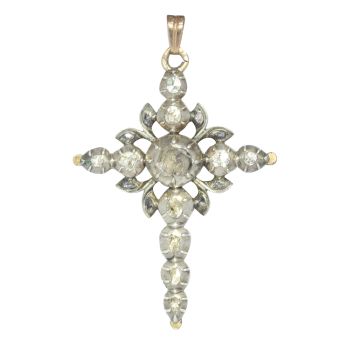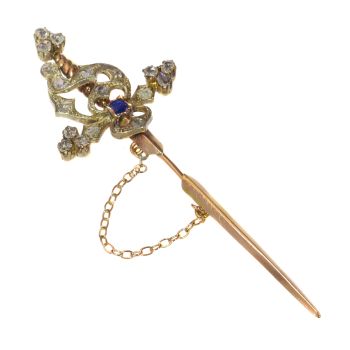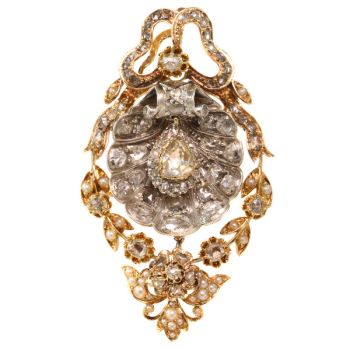Art Nouveau brooch lady's head signed Rasumny 1900
Unknown artist
Gold
€ 3.150
Adin Fine Antique Jewellery
- About the artwork
Antique jewelry object group: brooch
Condition: very good condition
- (more info on our condition scale)
Country of origin: Although it does not carry any legible control marks we believe this to be of Belgian origin.
Style: Art Nouveau - Art Nouveau (French for New Style) is an international movement and style of art, architecture and applied art - especially the decorative arts - that peaked in popularity at the turn of the 20th century (1890–1905).
The name "Art Nouveau" is French for "new art". It is also known as Jugendstil, German for "youth style", named after the magazine Jugend, which promoted it, and in Italy, Stile Liberty from the department store in London, Liberty & Co., whichpopularised the style, and in Holland as “Sla-olie-stijl”, Dutch for “salad oil style” after a advertisement poster for this product that was made in that style.
A reaction to academic art of the 19th century, it is characterized by organic, especially floral and other plant-inspired motifs, as well as highly stylized, flowing curvilinear forms. Art Nouveau is an approach to design according to which artistsshould work on everything from architecture to furniture, making art part of everyday life. Although Art Nouveau fell out of favour with the arrival of 20th-century modernist styles, it is seen today as an important bridge between the historicism ofNeoclassicism and modernism.
- See also: Art Nouveauor more info on styles
Style specifics: Art Nouveau - Although Art Nouveau took on distinctly localised tendencies as its geographic spread increase some general characteristics are indicative of the form. A description published in Pan magazine of Hermann Obrist's wall-hanging Cyclamen(1894) described it as "sudden violent curves generated by the crack of a whip", which became well known during the early spread of Art Nouveau.
Subsequently, not only did the work itself become better known as The Whiplash, but the term "whiplash" is frequently applied to the characteristic curves employed by Art Nouveau artists. Such decorative "whiplash" motifs, formed by dynamic,undulating, and flowing lines in a syncopated rhythm, are found throughout the architecture, painting, sculpture, and other forms of Art Nouveau design.(from: Wikipedia)
Period: ca. 1900
- (events & facts of this era, poetry of this era, fashion of this era)
Material: 18K yellow gold (touchstone tested)
- (more info on precious metals)
Extra information: Felix Rasumny (b. 20 April 1869, Sebastopol�d. 1940, Paris). Rasumny was a Russian engraver, born in Sebastopol, but immigrated to Paris. He was trained at the Ecole des Arts Decoratifs under such masters as Aime Millet, Camille Gauthier and PaulinTasset. He exhibited his works at the Salon of the Societe des Artistes Francais in 1891 and at the Exposition Universelle in 1900 (awarded with a silver medal). He became a member of the Societe Nationale des Beaux-Arts in 1911 and was titled asChevalier of the Legion of Honor in 1933.
Diamond(s): Three rose cut diamonds. We do not have the weight of the diamonds which is normal in our trade when it comes to rose cuts.
- All diamonds we offer are screened by the IJGC - lab (www.ijgc-worldwide.com) for whether they are natural or synthetic, and all diamonds in this jewel are 100% guaranteed to be natural.
Birthstones: Diamond is the birthstone (or month stone) for April.
- (more info on birthstones)
Signature: F Rasumny
Monogram: RD or AD
Hallmarks: No trace.
- (more info on hallmarks)
Dimensions: width 2,45 cm (0,96 inch) - See picture with a ruler in cm and inches
Weight: 7,80 gram (5,02 dwt)
Adin Reference Nº: 21027-0180
Copyright photography: Adin, fine antique jewellery
all floral jewelry, jewelry with human face, jewelry with human motifs, yellow gold jewelry, jewelry with rose cut diamonds, latest acquisitions,
antique jewelry, estate jewelry, vintage jewelry or modern jewelry
Jewelry with birthstones (or month stones) for:
January - February - March - April - May - June - July
August - September - October - November or December.
Additional information:
jewelry glossary - wall of fame - visit us in Antwerp - subscribe to our mailinglist.
What is antique jewelry? - What is estate jewelry? - What is vintage jewelry?
- About the artist
It might happen that an artist or maker is unknown.
Some works are not to be determined by whom it is made or it is made by (a group of) craftsmen. Examples are statues from the Ancient Time, furniture, mirroirs, or signatures that are not clear or readible but as well some works are not signed at all.
As well you can find the following description:
•“Attributed to ….” In their opinion probably a work by the artist, at least in part
•“Studio of ….” or “Workshop of” In their opinion a work executed in the studio or workshop of the artist, possibly under his supervision
•“Circle of ….” In their opinion a work of the period of the artist showing his influence, closely associated with the artist but not necessarily his pupil
•“Style of ….” or “Follower of ….” In their opinion a work executed in the artist’s style but not necessarily by a pupil; may be contemporary or nearly contemporary
•“Manner of ….” In their opinion a work in the style of the artist but of a later date
•“After ….” In their opinion a copy (of any date) of a work of the artist
•“Signed…”, “Dated….” or “Inscribed” In their opinion the work has been signed/dated/inscribed by the artist. The addition of a question mark indicates an element of doubt
•"With signature ….”, “With date ….”, “With inscription….” or “Bears signature/date/inscription” in their opinion the signature/ date/ inscription has been added by someone other than the artist
Are you interested in buying this artwork?
Artwork details
Related artworks
- 1 - 4 / 12
Onbekende Kunstenaar
François-Théodore Legras – Tall “Fleurs de Pommier” apple blossoms vase1900 - 1909
Prijs op aanvraagAntiques Emporium
1 - 4 / 24Onbekende Kunstenaar
Antieke Saffier Broche sleutel1920
Prijs op aanvraagAnita Potters Juwelier Antiquair
1 - 4 / 24- 1 - 4 / 24
- 1 - 4 / 24
- 1 - 4 / 12

